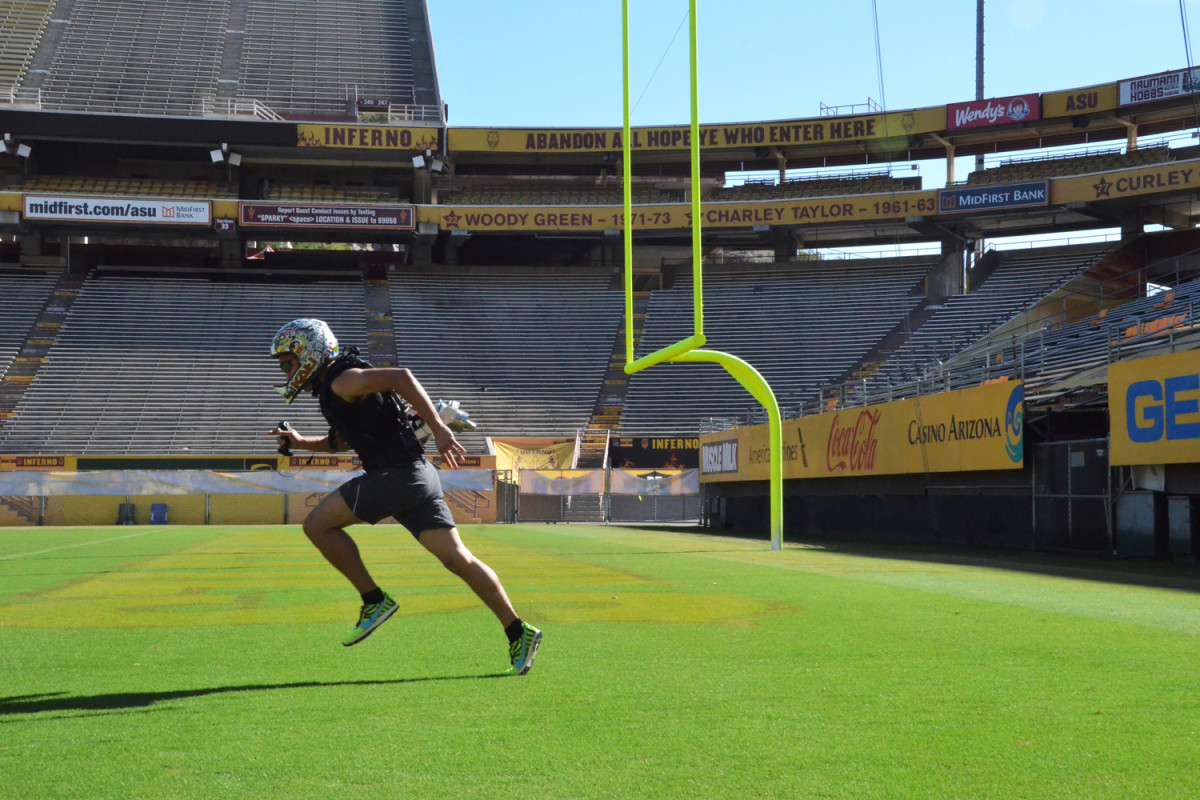Lookout, Road Runner! This ASU scientist built a jetpack for running

Jason Kerestes wants to break the four-minute mile, but without the grueling training regimen usually needed to become an elite runner. Instead, Kerestes, a mechanical engineering masters student at Arizona State University with a touch of Wile E. Coyote in him, wants to use a jetpack.
His contraption employs two electric, ducted fans attached to a backpack that pushes a runner along. The whole setup, including batteries, weighs around 11.5 pounds, and produces an extra forward impulse of up to 15 pounds of force. The jetpack can be controlled with a handheld device, and reaches full power in less than a second.
The science behind Hunter Pence’s powerful home run swing
, who had started his own custom welding business before attending ASU, was brought onto the project.
To work out exactly how much added force they would need to push a runner below four minutes, Kerestes and Sugar rigged up a golf cart with a harness, and dragged volunteers around a track. The researchers found there was a sweet spot of between 10 and 15% of a runner’s body weight pushing them forwards and slightly upwards. But the exoskeletons they were building weren’t capable of this, and also required a long time to re-rig to handle different body shapes.
So Kerestes dreamed up the jetpack. The design works similar to the golf cart harness—though it pushes rather than pulls the runner’s torso along—and because it is attached to a backpack, it is easy to put on. Additionally, the whole system is electric, making it much safer than using combustible fuel in combat situations, or even elsewhere.
ASU scientist builds jetpack for runners






“The original idea was just for soldiers,” Kerestes says, “but what we’ve found is that it works on extreme sports as well.” He has tried the device out on a skateboard, accelerating up to around 28 mph, and has plans to take it to nearby Eloy, Ariz., the world’s largest drop zone, to give skydivers a chance to play with the jetpack in the air.
The device might also find its way into more traditional sports. Some runners use over-speed training to help them reach higher speeds than they could comfortably run at otherwise, thereby increasing leg turnover. Another version of the jetpack, in which the fans oscillate up and down, might allow runners to not just increase their speed, but reduce impact forces, too. When the fans point downward they work against the force of the foot striking the ground.
ATTACK: The Art & Science of Relentless Excellence
could seek to develop it further on his own. “I’ve had about five calls so far from people interested in purchasing them,” he says.
He also has his sights set on breaking the mile world record, which is currently held by Hicham El Guerrouj of Morocco. Kerestes figures that if he can persuade an athlete who can already run close to a four-minute mile to try out the jetpack, it will push that runner under El Guerrouj’ mark of 3:43.13, set in 1999. Unfortunately, Kerestes’ plan to have one of ASU’s middle distance runners try out the backpack doesn’t look like it will work out—it seems that using a jetpack might constitute an NCAA violation.
For now, though, Kerestes is working on fine-tuning the device. He hopes to cut about six pounds from the weight of the system by building the frame and backpack out of carbon fiber. That would allow him to add more batteries, doubling the time it can run at full thrust from four to eight minutes. Kerestes also wants to make it a little more discreet. “One of the things we are working on is silencing technology,” he says, “[right now] it does sound like a jet engine.”
